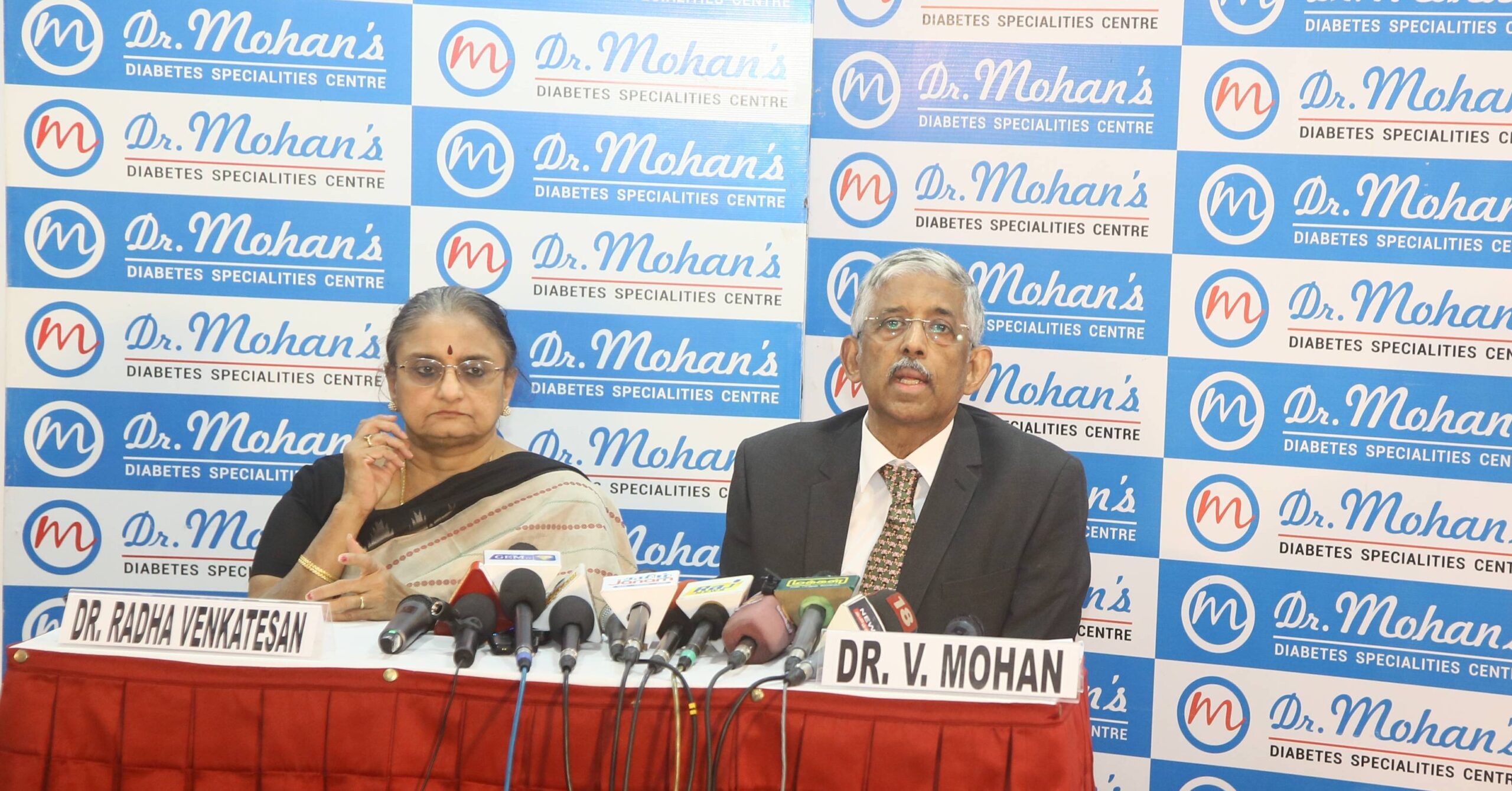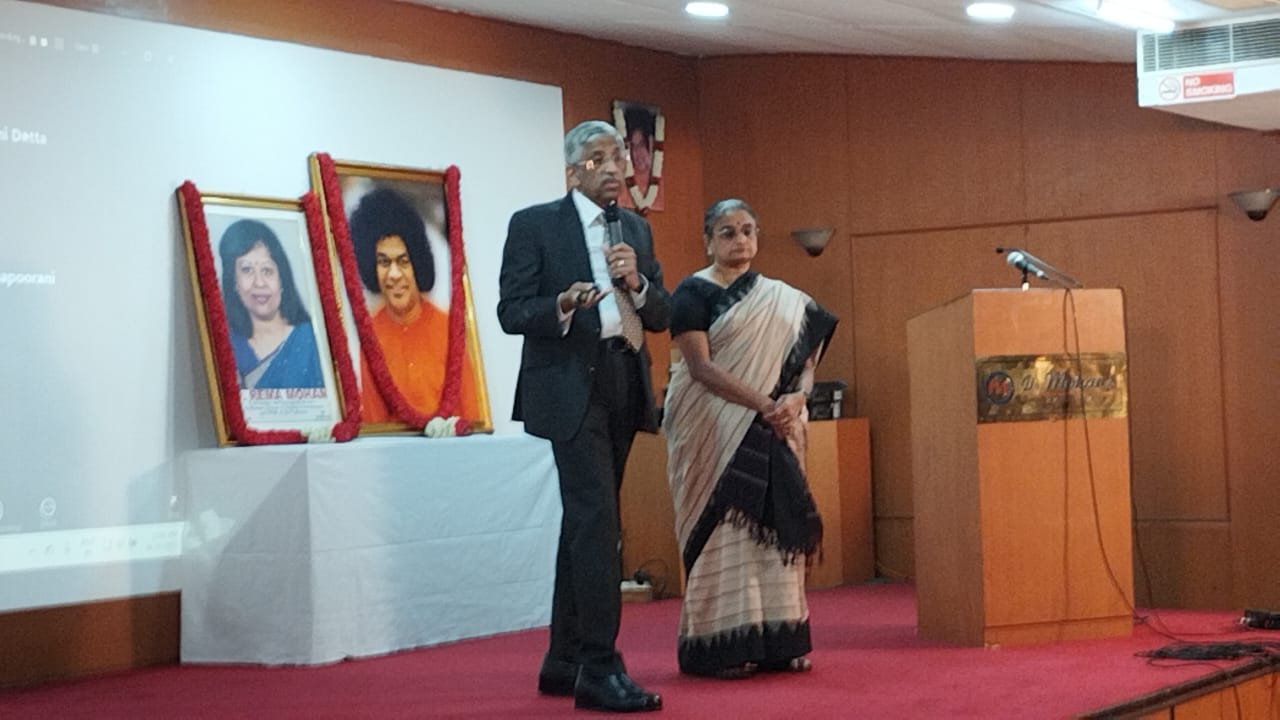MDRF & US Scientists Discover New Di abetes Subtype: A Global Breakthrough in MODY Research
Newly identified genetic mechanism co uld revolutionize diagnosis and treatme nt of Maturity-Onset Diabetes of the Yo ung (MODY).
Chennai, 8th May, 2025: In a major brea akthrough, researchers from the Madra s Diabetes Research Foundation (MDR F) in Chennai, India, and Washington Un iversity School of Medicine in St. Louis, Missouri, USA have jointly announced t he discovery of a new subtype of MODY diabetes, potentially transforming how certain forms of the disease are diagnos ed and treated worldwide. The discover y centers around a rare, inherited form of diabetes called Maturity-Onset Diab etes of the Young (MODY), a genetic for rm of diabetes typically diagnosed in chi ldhood and adolescence and has been p ublished online ahead of print in the pre estigious journal ‘Diabetes’, published b y the American Diabetes Association.
The study, based on a collaborative inve stigation involving detailed genetic and functional analyses of Indian patients cl inically diagnosed with MODY, reveals a groundbreaking mechanism behind a su btype of MODY affecting the ABCC8 ge ne which plays a crucial role in pancreat ic β cell function.
Prof Colin G Nichols, the lead researche r of this work from Washington Univers ity School of Medicine, St Louis, Missour uri, USA states: “Usually ABCC8 mutati ons work through Gain Of Function (GO F) mutations which lead to enhanced AB CC8 protein activity. This can occur in n eonatal period when it is known as Neo natal Diabetes. In adults it occurs as AB CC8 MODY or MODY 12). Through our collaborative work with MDRF, using v arious experiments in the laboratory, w e were able to show some novel mutati ons in the Indian patients with MODY w hich occur as Loss Of Function (LOF). LO F mutations, abolish or reduce the activi ty of protein and they normally lead to C ongenital Hyperinsulinism (CHI) which p resents as persistent low blood glucose levels (hypoglycemia) in childhood. Thes se patients seem to have had CHI earlier but crossed over to the opposite conditi on, of high blood sugar (diabetes) in late r life. This is the first demonstration of t his mechanism in a MODY subtype to ou r knowledge”.
Dr. Radha Venkatesan, Executive Scient ific Officer and Head of Molecular Gene tics, who is the lead researcher of this w ork from MDRF, emphasizes the import ance of the work and states, “This disco very of novel genetic subtype of MODY represents a significant advancement in our understanding of MODY and explai ns the function of potassium ATP (K-AT P) channels in the pancreatic beta cell m embrane. Through our work in the lab a nd follow-up of our patients, we propos e that diabetes driven by KATP-Gain of Function and KATP-Loss Of Function m utations should be officially be recogniz ed as distinct disease subtypes, with di fferent molecular basis and different cl ininical and therapeutic imffplications”.
Dr. V. Mohan, Chairman of MDRF adds, “We are excited that we have discovere d a new sub type of MODY diabetes. Thi s work underscores the importance of g enetic testing and functional understan ding for precision diagnosis of diabetes i n particular and MODY subtypes of diab etes in particular. By identifying these u nique subtypes of MODY, we are close t o providing more precise diagnosis, trea tment and better care for individuals af fected by this novel subtype of MODY.
Patients with this new (Loss of Function) MODY subtype do not respond to Sulph o onylureas unlike other forms of MOD Y like MODY 3 & MODY 1 & MODY 12. F urther studies are needed to assess th e best antidiabetic medicines to treat th is novel type of diabetes. This study also opens up new avenues for discovery of novel drug targets in diabetes treatmen t”.
MODY is a rare, inherited form of diabet es caused by mutations in a single gene, t ypically presenting in adolescents and young adults. While 13 MODY subtypes have been recognized so far, this newly i dentified variant upends long-standing assumptions about how the disease dev elops. The discovery not only expands t he scientific understanding of MODY bu t also underscores the urgent need for w ider access to genetic screening — partic ularly in countries like India, where such testing is not yet part of routine diabete es care. This breakthrough could mark a turning point in advancing personalized diagnosis, treatment, and long-term ma nagement for thousands of individuals li ving with undetected or misclassified fo rms of diabetes.
About Madras Diabetes Research Foun dation (MDRF): Founded in 1996 by Dr. V. Mohan, the Madras Diabetes Researc h Foundation (MDRF) is one of India’s pr emier institutions dedicated to diabetes and metabolic research. Recognized as a n ICMR Collaborating Centre of Excelle lence, MDRF focuses on high-impact re search spanning epidemiology, genomic ics, clinical trials, nutrition and public he alth. With over 1,800 scientific publicat ions in reputed journals and collaborati ons with leading global institutions and universities, MDRF continues to play a v ital role in shaping evidence-based strat te gies for the prevention and managem ent of diabetes in India and globally.





